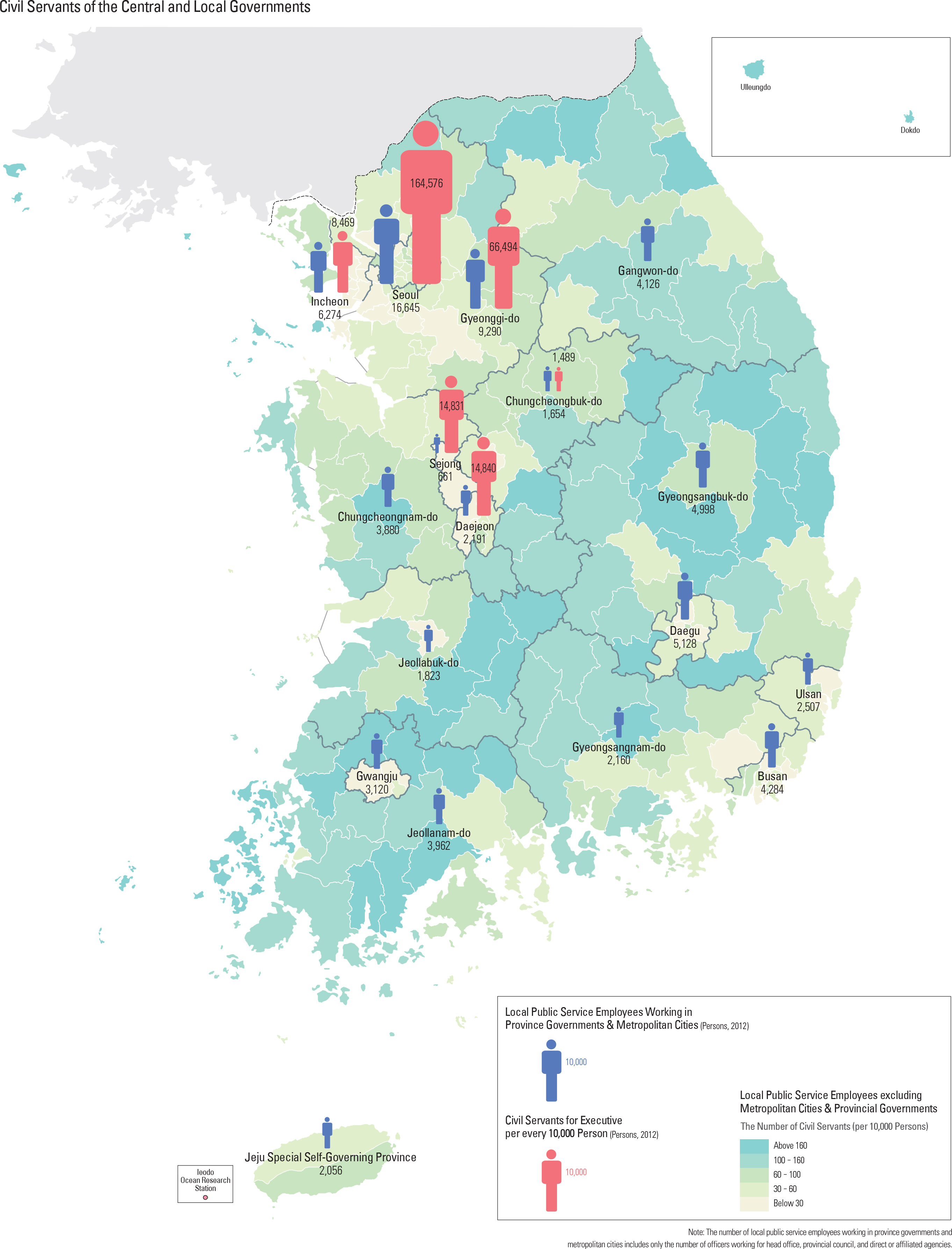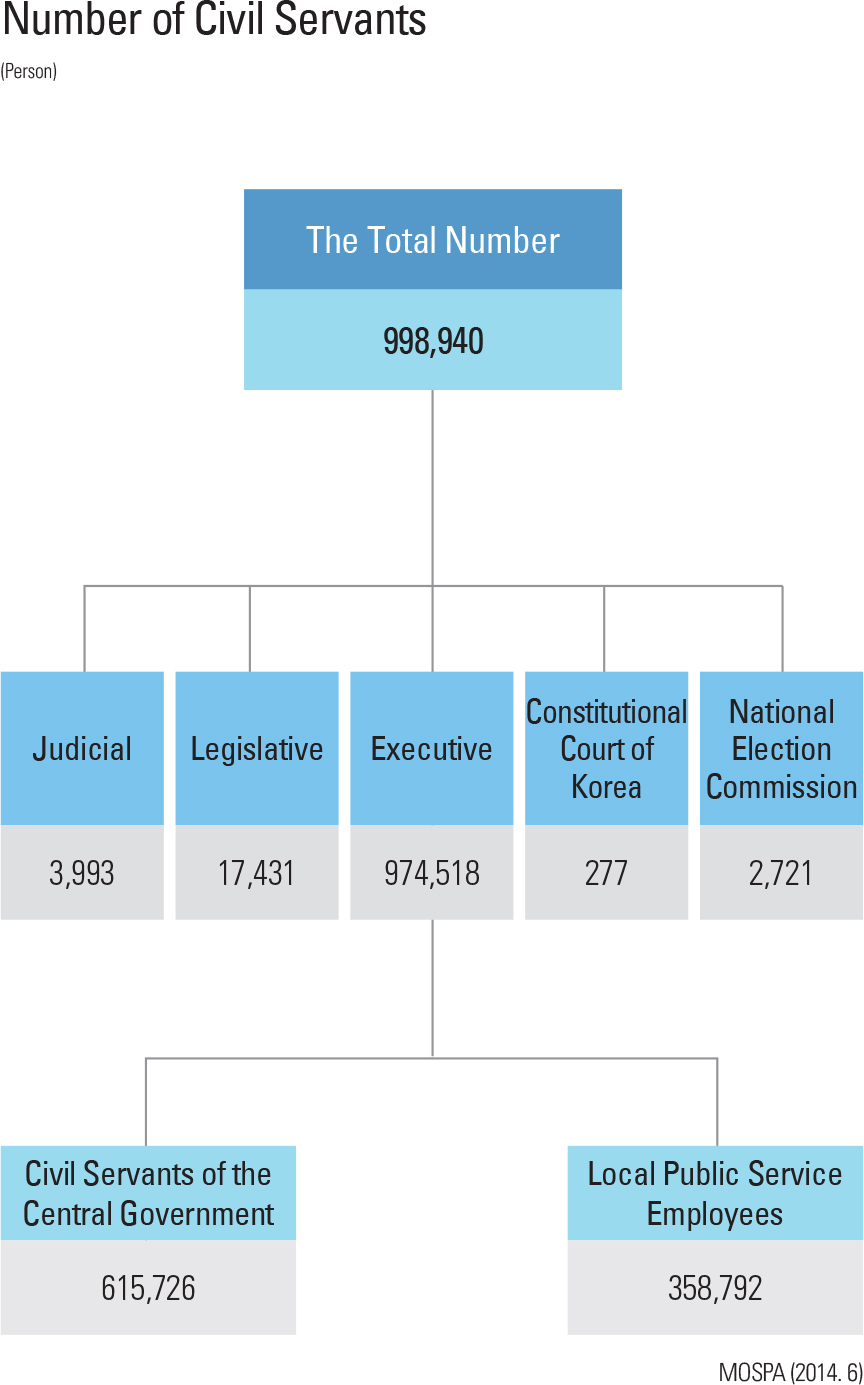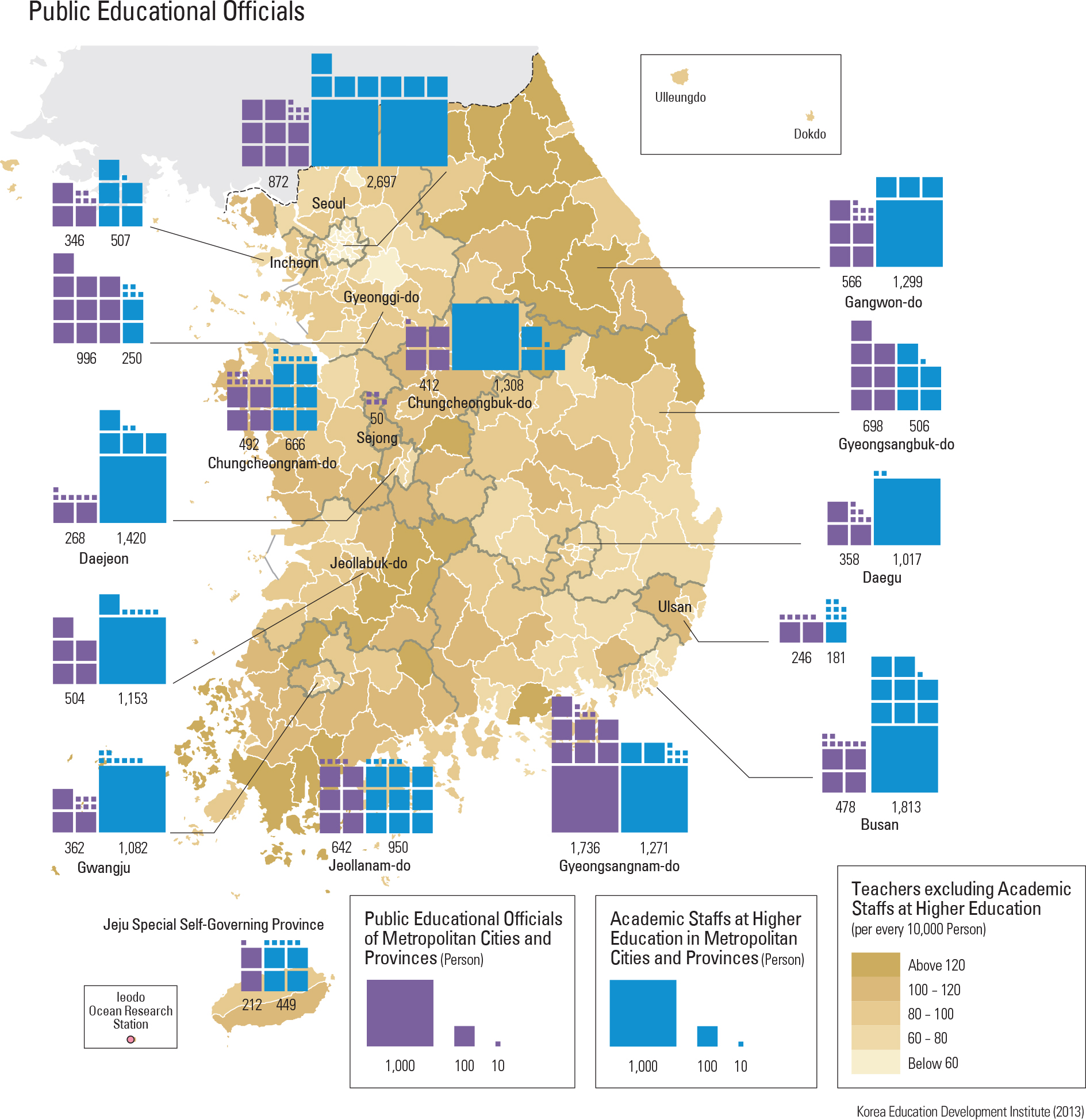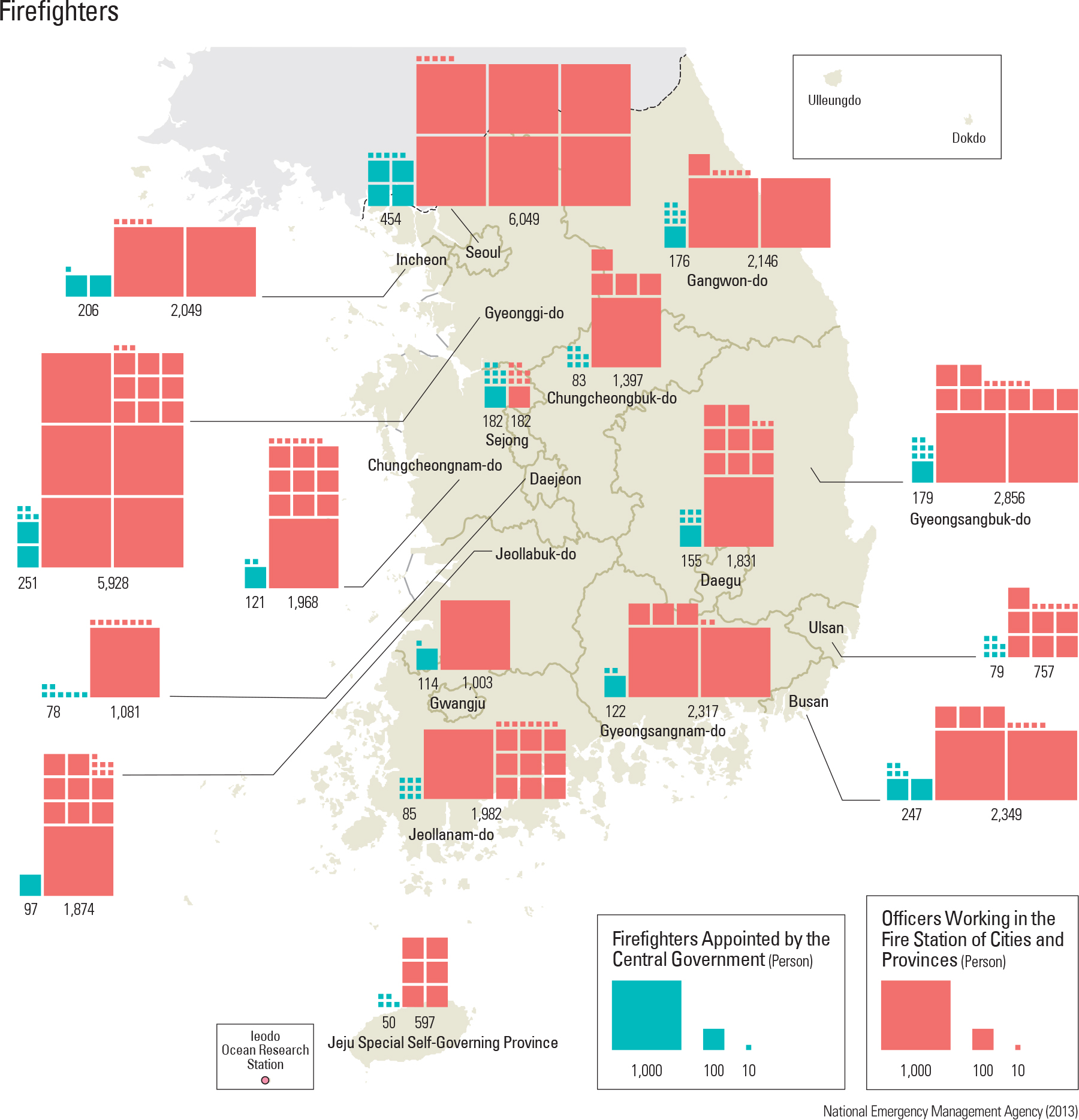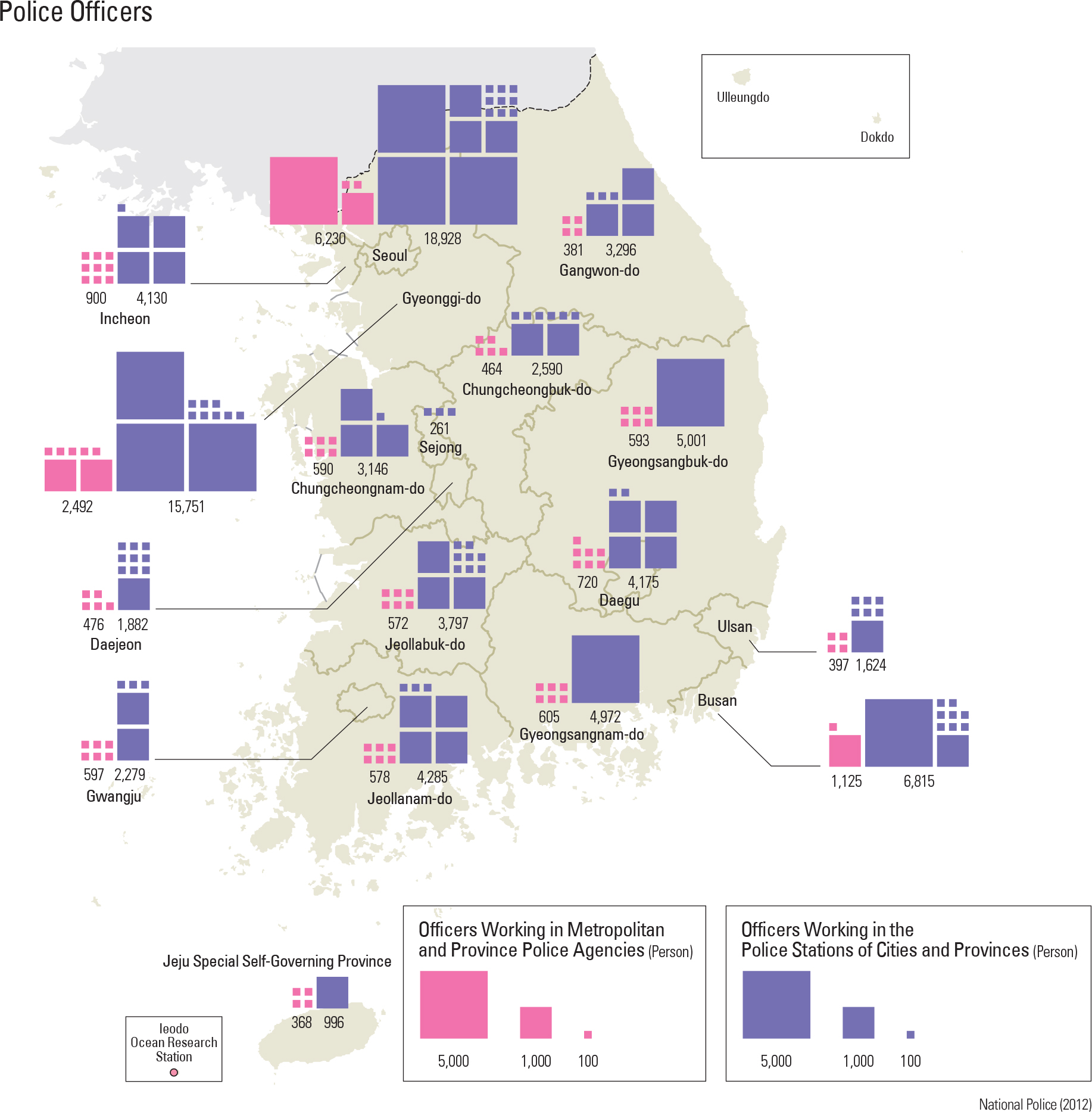Civil servants in Korea serve in one of five main groups: the Legislature, the Judiciary, the Administration, the Constitutional Court of Korea, and the National Election Commission. In 2013, the total number of civil servants was close to a million people (998,940). While the majority (97.6%: 974,518) of these serve the Administration, others are working in the Legislature (0.4%: 3,993), and the Judiciary (1.7%: 17,431). The National Election Commission and the Constitutional Court of Korea are staffed by only 0.3% (2,721) and 0.03% (277) respectively.
All civil servants also fall into one of two categories: national public officials and local public service employees. The former (63.2%: 615,726) are appointed by the President and the heads of each ministry: the latter (26.8%: 358,792) are called to office by the head of the local government according to the Local Officials Act (Ministry of Security and Public Administration, 2014). Almost 44.1% (440,845) of national public officials work for one of the 17 Executive Ministries. The Ministry of Education has the highest percentage (35.3%) with 352,538 officials. Ministry of Science, ICT and Future Planning and the Ministry of Justice take up 3.3% (33,285) and 2.1% (21,071) each. The percentage of those who do not belong to governmental agencies other than the 17 Ministries is 17.5% (174,881).
The Civil Service map presents the ratio of national public officials and local public service employees per every 10 thousand people by region. In terms of the regional distribution of the former, they are concentrated in Seoul (32.3), Gyeonggi-do (13.1), the Sejong Special Autonomous City (2.9) and Daejeon (2.9), respectively. The Sejong Special Autonomous City in particular has the highest rate (58.4) of the latter as a percentage of the population, which is three times higher in ratio than the average (20.8). It is followed by the Jeju Special Self-Governing Province (35.2), Gangwon-do (26.8), Incheon (22.1), Gwangju (21.1), Jeollanam-do, and Daegu. Gyeongsangnam-do has the lowest in ratio (6.5). Ulleung-gun (385.1) and Yeongyang-gun (308.7) in Gyeongsangbuk-do contain the highest ratios in the sub-areas while the Bupyeong-gu (17.2) and the Seo-gu (17.7) in Inchon contain the lowest.
